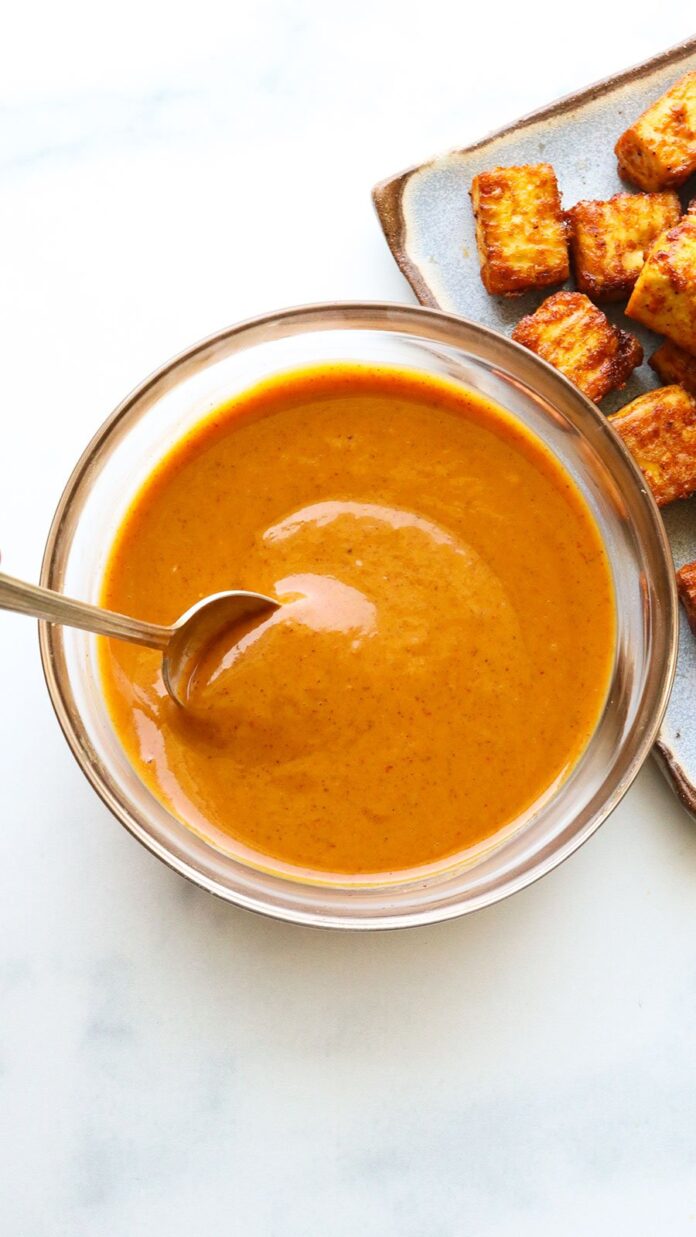If you try no other recipe on my website, please try this one. I’ve been testing it for months to ensure it’s easy to replicate (aka foolproof!) and downright delectable.
Once you taste it, you’ll likely find yourself coming up with reasons to make it again and again.
I originally intended this to be a simple dip for crispy tofu, but now I want to drizzle it on salads, noodle bowls, and every other meal we eat this week. I hope you’ll love it just as much!
⭐⭐⭐⭐⭐ Featured Review
“This truly is the BEST peanut sauce, and also somehow the easiest!!! So delicious.” – Marcella
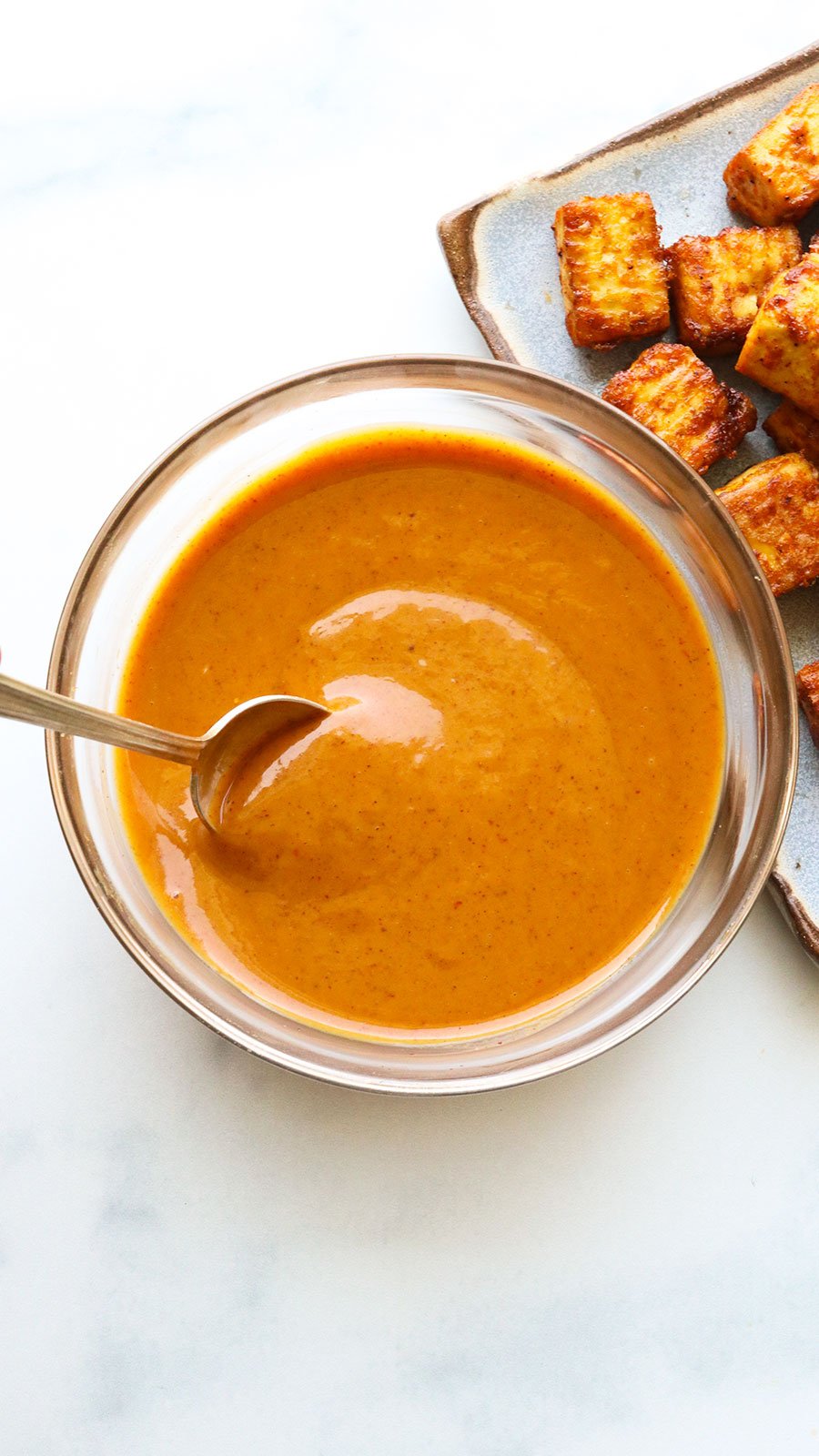

Thai Peanut Sauce Ingredients
Here’s what you’ll need:
- Peanut butter. Use all-natural peanut butter for the same results. This means you’ll have to stir oil back into the jar when you first open it. I usually buy salted peanut butter for a flavor boost. (If you don’t have it on hand, almond butter or cashew butter could work, too.)
- Tamari. I use this soy sauce alternative to keep the recipe gluten-free. Don’t use low-sodium versions for the best flavor. Regular soy sauce can be swapped if you don’t need a gluten-free recipe.
- Sriracha. This adds spice and is easy to stir in. Feel free to use more or less, to taste!
- Maple syrup. This natural sweetener is less traditional, but I love the subtle flavor it adds. Use honey if you prefer. (In that case, this recipe won’t be vegan-friendly, though.)
- Lime juice. Fresh lime juice is best for adding a tangy flavor. Don’t use the bottled stuff! If you don’t have it on hand, lemon juice can be swapped, or use half the amount of rice wine vinegar.
- Garlic and Ginger. Use a microplane to mince these into the sauce finely. It will evenly distribute their flavor! You could use dried versions in a pinch (just a 1/3 of the amount), but this sauce will taste best with fresh.
This dip is easy to customize, as you can adjust the flavor as you go.
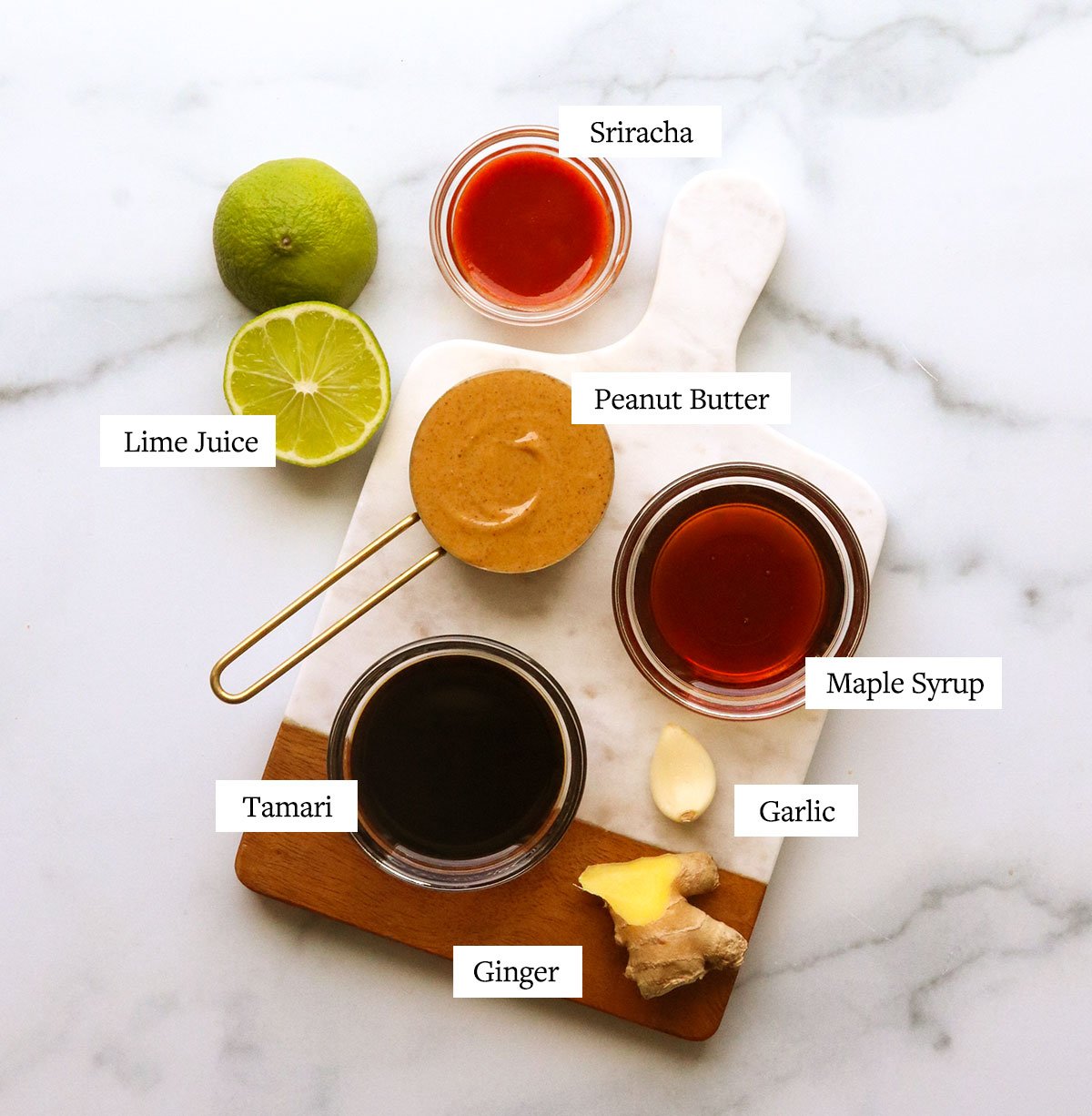

How to Make Peanut Butter Sauce
Step 1:
In a medium bowl, combine the peanut butter, tamari, lime juice, maple syrup, sriracha, minced garlic, and ginger. Use a whisk or spoon to stir well.
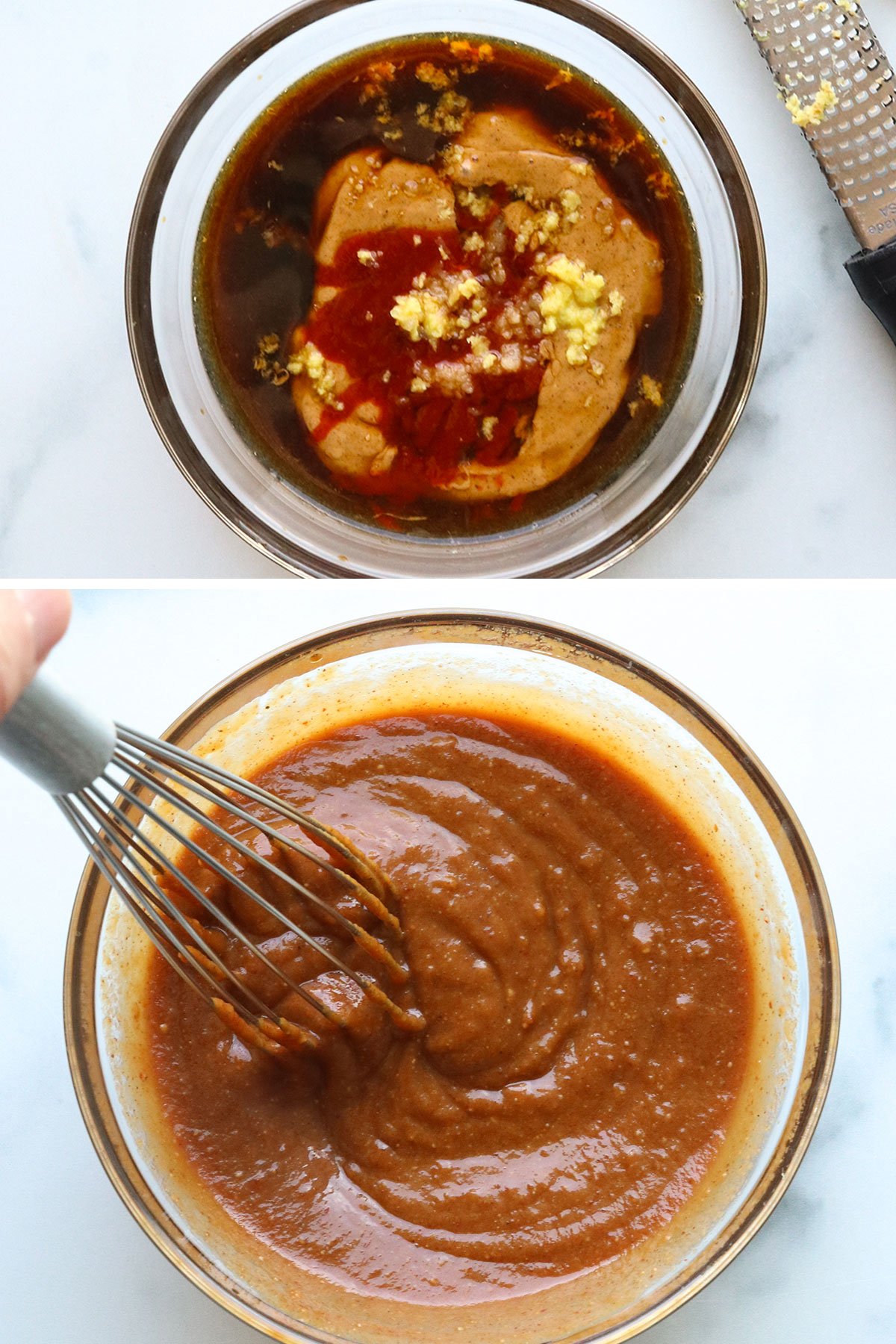

Step 2:
Add 1 to 2 tablespoons of water to help thin out the sauce. Start with just 1 tablespoon at a time, and continue to add more water until the sauce reaches your desired consistency.
You could also use coconut milk instead of water to make the sauce thinner.
Two tablespoons of water are usually plenty for a sauce that will drip off of a spoon. Serve right away with spring rolls, crispy tofu, or over your favorite noodles. It also makes a delicious salad dressing!
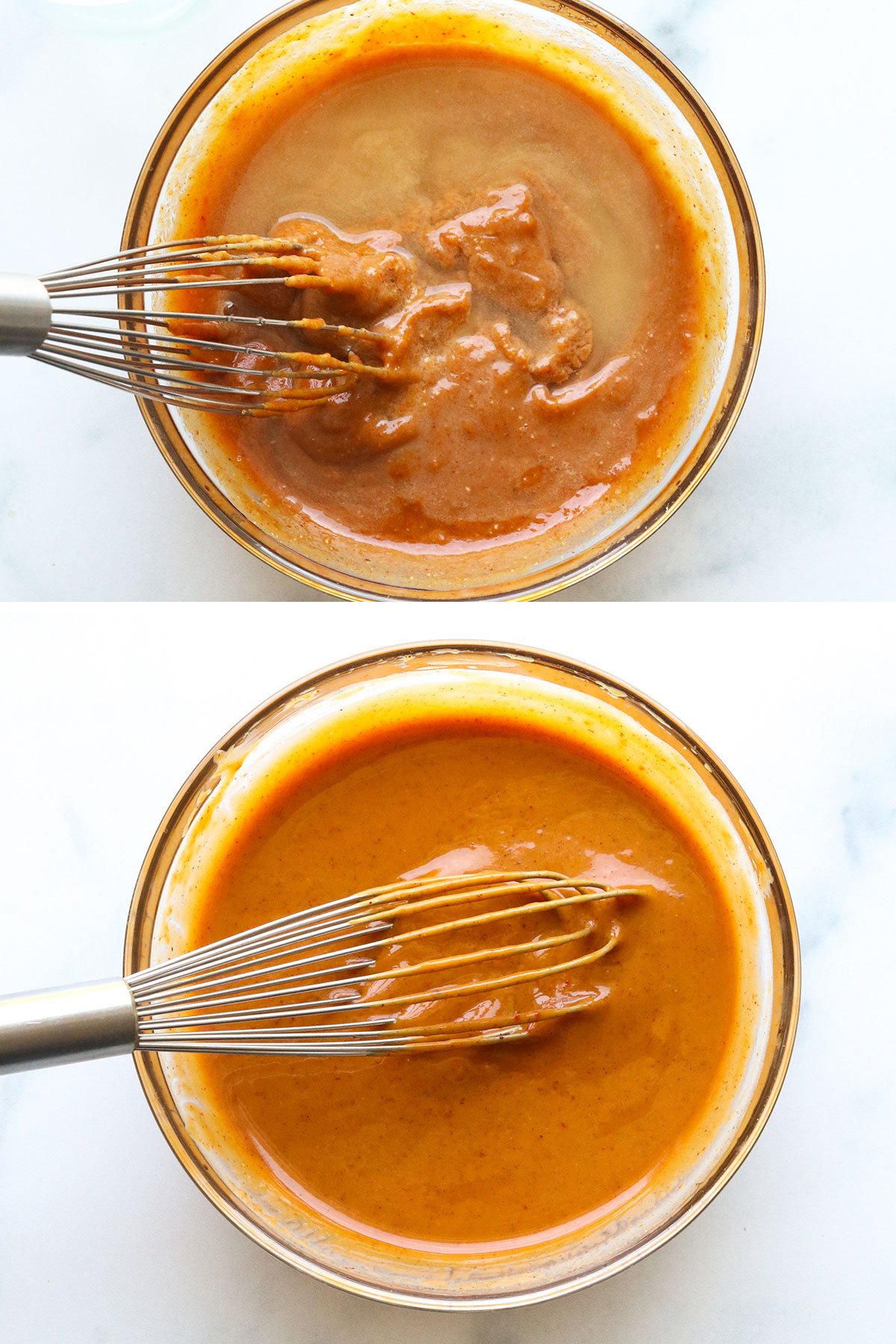

Thai Peanut Sauce Storage Tips
Leftover peanut sauce can be stored in an airtight container in the fridge for up to 5 days.
It will thicken when chilled, so let it come to room temperature before using it again. Or, thin it out with another tablespoon of water, if needed.
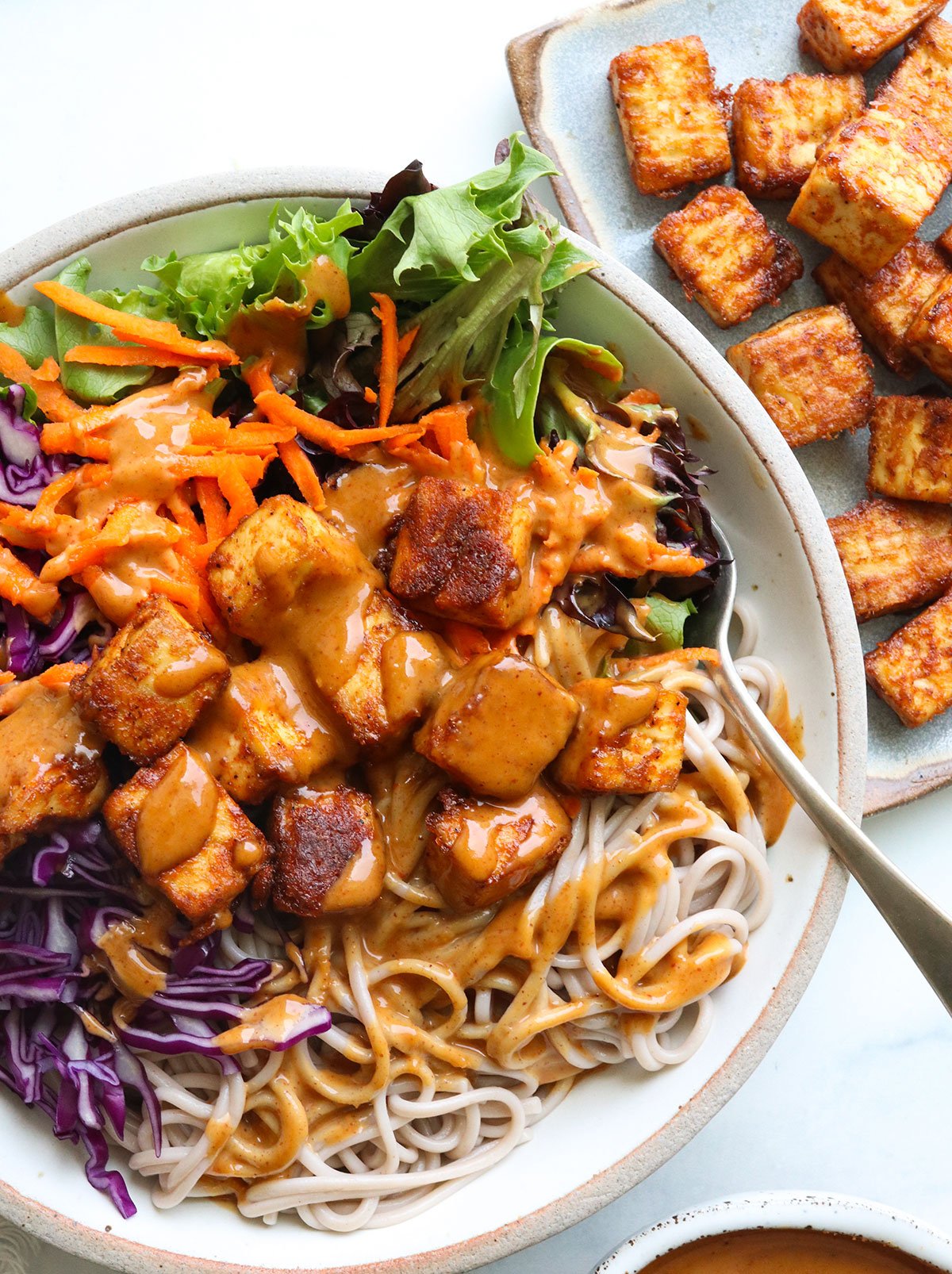

- ⅓ cup peanut butter
- 2 tablespoons tamari (or soy sauce; see notes)
- 2 tablespoons lime juice
- 2 tablespoons maple syrup
- 1 tablespoon sriracha
- 1 inch fresh ginger , minced
- 1 garlic clove , minced
-
In a medium bowl, combine the peanut butter, tamari, lime juice, maple syrup, and sriracha. Use a microplane to finely mince the ginger and garlic on top. Whisk well until the ingredients are mixed. (It will be thick at this point.)
-
Add a tablespoon of water to the bowl, and whisk again until the sauce is thinner. If you want an even thinner sauce, add another tablespoon of water, and stir again. Be careful not to add too much water at once, so the sauce won’t get too thin.
-
This peanut sauce can be used right away or stored in an airtight container in the fridge for up to 5 days. It will thicken when chilled, so you may need to add another tablespoon of water when you get it out of the fridge later. Or let it come to room temperature to thin out again.
- Nutrition information is for roughly 3 tablespoons of sauce. This information is automatically calculated, and is just an estimate, and not a guarantee.
- This recipe was tested with all-natural creamy peanut butter (the only ingredients on the label are peanuts and salt). You can use almond butter, cashew butter, or tahini as an alternative to peanut butter.
- Tamari is often a gluten-free alternative to soy sauce, but be sure to check the label because it’s not always gluten-free. Use regular soy sauce if you don’t need a gluten-free option. If you need a soy-free recipe, try coconut aminos instead. You’ll probably have to add extra salt, in that case, since it’s not as salty as soy sauce or tamari.
Calories: 164kcal | Carbohydrates: 13g | Protein: 6g | Fat: 11g | Saturated Fat: 2g | Sodium: 689mg | Potassium: 205mg | Fiber: 1g | Sugar: 8g | Vitamin A: 9IU | Vitamin C: 5mg | Calcium: 25mg | Iron: 1mg
More Recipes to Try
If you try this Peanut Sauce recipe, please leave a comment and star rating below letting me know how you like it.


